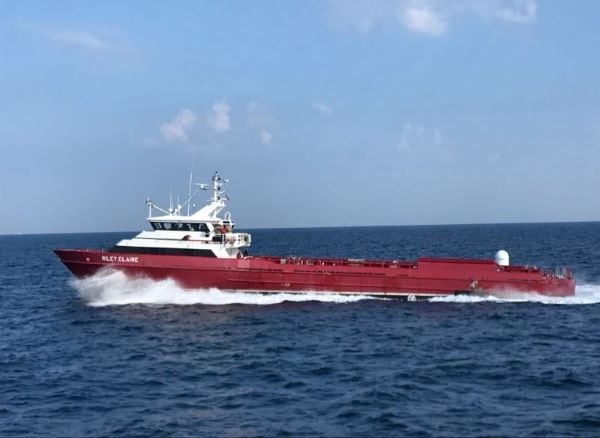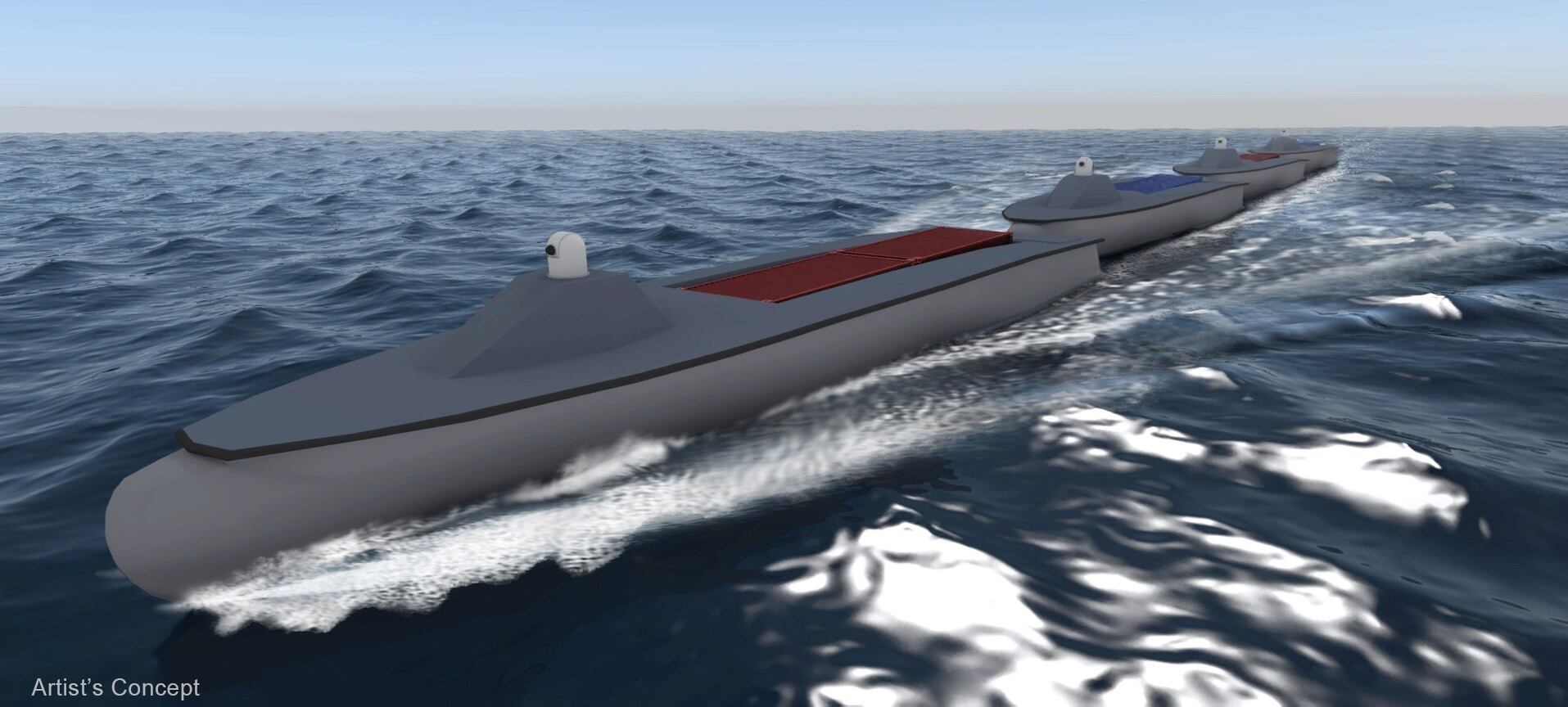The U.S. Navy is developing an campaign plan for unmanned vehicles that will prioritize commonalities across the service’s ever growing portfolio of drones and unmanned vessels.
Dorothy Engelhardt, director of unmanned systems for the deputy assistant secretary of the navy for ship programs, said the chief of Navy operations (CNO) has asked for a plan that will identify gaps in the current architecture and drive investments moving forward.
RELATED

“The CNO says, 'Hey, I want an unmanned campaign plan. Tell me where my gaps are. Tell me where I’m not investing. Tell me what standards I need to have. Tell me what networks I need to have, etc.,” Engelhardt said during a Booz Allen Hamilton virtual event Oct. 27. “Right now we’ve stood up what we call a war room, and in that war room we’re going through things like unmanned and long range fires to say, what is the defense strategy and how do I do that full up?”
Essentially, the Navy is mapping out its kill chains to see where there are gaps, and then prioritizing investment in those gaps.
“The Navy recognizes that, currently, we’re very stovepiped. We’re just aligned that way,” Engelhardt explained. “The Vice CNO and the CNO recognized [that] we’re kind of moving away from exquisite platform-centered capabilities, and now we’re really looking at — What does a network capability on the whole really look like? And unmanned is really driving that right now.”
When it comes to unmanned, the Navy is prioritizing commonalities, whether that’s payloads that can be installed on multiple types of platforms, interoperable standards or a unified control system.
“The Navy is looking at what is common to our vehicles, what is common to our data, and how are we going to create kind of like an internet of things for our data?” said Engelhardt. “How are we going to have a repository for our data, and what those standards need to be?”
And that commonality extends to both the surface and undersea unmanned vessels.
“The best thing about having all this in one [program executive] office is that we’re able to collaborate on our enabling technology among both surface and undersea,” said Engelhardt. “There’s a lot of value in that.”
A key goal for the Navy is to prevent locking into a single vendor and ensuring its systems are interoperable between platforms.
“Under our UMAA, our Unmanned Maritime Autonomy Architecture, we’ve invested and are investing and working with industry to determine what the common interfaces and protocols need to be. We don’t want to be beholden to any particular vendor,” said Engelhardt. “So we’ve established these standards based on different functional capabilities.”
To that end, the Navy posted its Roadmap for Autonomy Standard request for information back in May, receiving feedback in June. Engelhardt said she wants those standards and that open architecture locked down before the program of record is established.
RELATED

In addition, the Navy is establishing the Rapid Autonomy Integration Lab (RAIL), which will set up a DevSecOps-style pipeline that will enable developers to rapidly build and integrate new autonomy solutions.
“We are establishing an autonomy lab where we will be able to have our autonomy in a virtual environment, and then we’ll be able to open that up for industry to come in,” said Engelhardt.
Another area where the Navy is pursuing common solutions is command and control (C2) — the systems that communicate with the unmanned vessels and tell them what to do. As the Navy’s portfolio of unmanned vessels grows, so too do the systems need to control them. The Navy’s issue is further exacerbated by the physical limitations of the Navy’s ships: There’s just not a lot of extra space to load up a number of C2 systems for the unmanned vessels.
“If we are going to have these systems working with or launching from our ships, you have to be mindful of the space,” explained Engelhardt. “So that being said, we’re trying to consolidate as much as possible and common control is one of the ways that we’re going to do that.”
That’s why the Navy is investing in a Common Control System (CCS), a single system that could consolidate all of the C2 functions needed for whatever unmanned platforms are assigned to the mission.
“CCS is really going to be our command authority when it comes to planning and execution,” said Engelhardt.
And the Navy has some funding to begin development within this campaign.
“When we started looking into how we’re going to be investing in unmanned systems […], we established [indefinite delivery / indefinite quantity] for both the undersea and the surface. They are in theory close to a billion over a ten year time period.”
Those contracts include on ramps and off ramps, noted Engelhadt, which gives the Navy the flexibility to bring in new companies that have capabilities the service wants.
“It’s not just who we have now in the sandbox who’s going to be there in perpetuity. That’s not the intent,” said Engelhadt.
Nathan Strout covers space, unmanned and intelligence systems for C4ISRNET.








